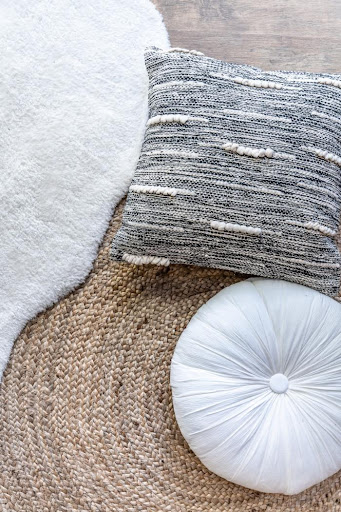Sisal is a natural fiber often used for carpets due to its durability and eco-friendliness. Will this be a perfect choice for your home? Read on to find out!

How is it made?
Sisal fibers originate in a cactus plant called Agave sisalana that grows in Africa and Brazil. Since it is a cactus, it prefers arid desert climates where other kinds of fibrous plants would be scarce. Agave sisalana has long been farmed for its internal, tensile fibers that people make into rope and twine. The fibrous stalks are cut, dried, and treated to produce tan-colored lengths. A popular destination for this twine is to be woven into sisal rugs for the floor. Source: HomeQuestionsAnswered
What are the pros and cons?
It is relatively easy to dye, making it very versatile for flooring design. It can stand up to high-traffic areas without being coarse or uncomfortable underfoot, and it wears well, making it good for high-traffic areas. But it can become slippery with use, so sisal is a poor choice for stairs.
Available in a wide variety of colors and patterns, sisal carpet can be used in almost any room of the house, although it must be used with caution around moisture, which can damage the fibers. The fact that sisal can be so easily dyed also means that it can be easily stained; it requires treatment to make it resistant to dirt and spills. Sisal is also relatively expensive, typically costing more than coir but less than wool. Source: TheSpruce
How to maintain?
Blot spills as they happen. Moisture of any kind can warp the weave of sisal and lead to browning of the fiber, so it is important to address spills as they happen. Blot the spot dry with a clean towel. Avoid rubbing, as this will only spread the moisture.
Take note of whether the spill left a stain. Even a slight change in color at the time of the spill can quickly alter the color of the rug. Source: WikiHow
Need help identifying which type of carpet material would suit your budget and needs? Call us!


